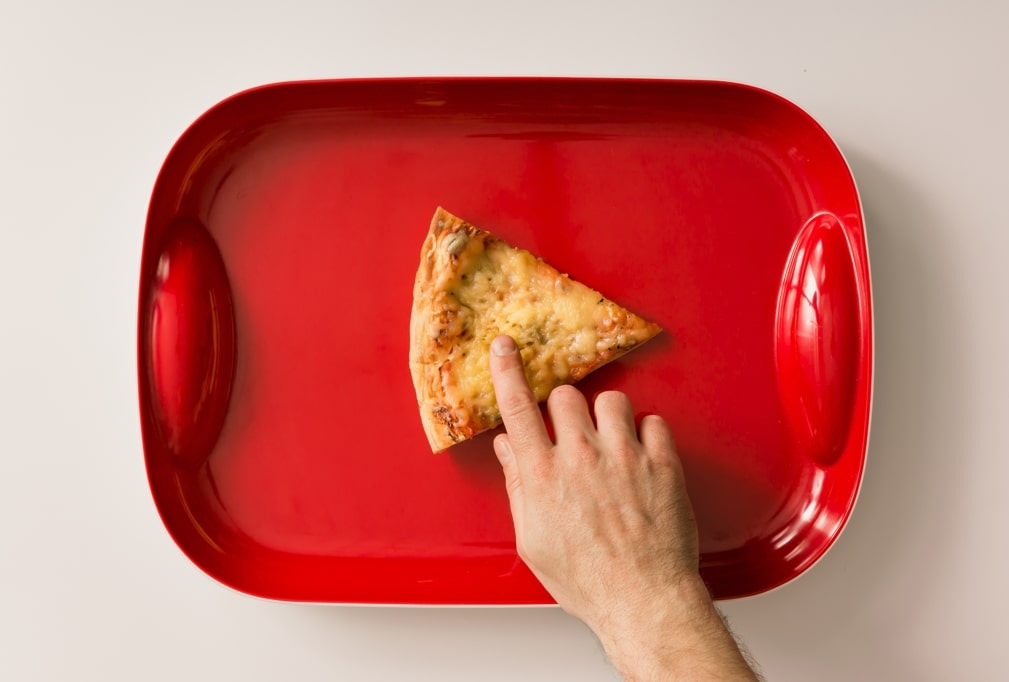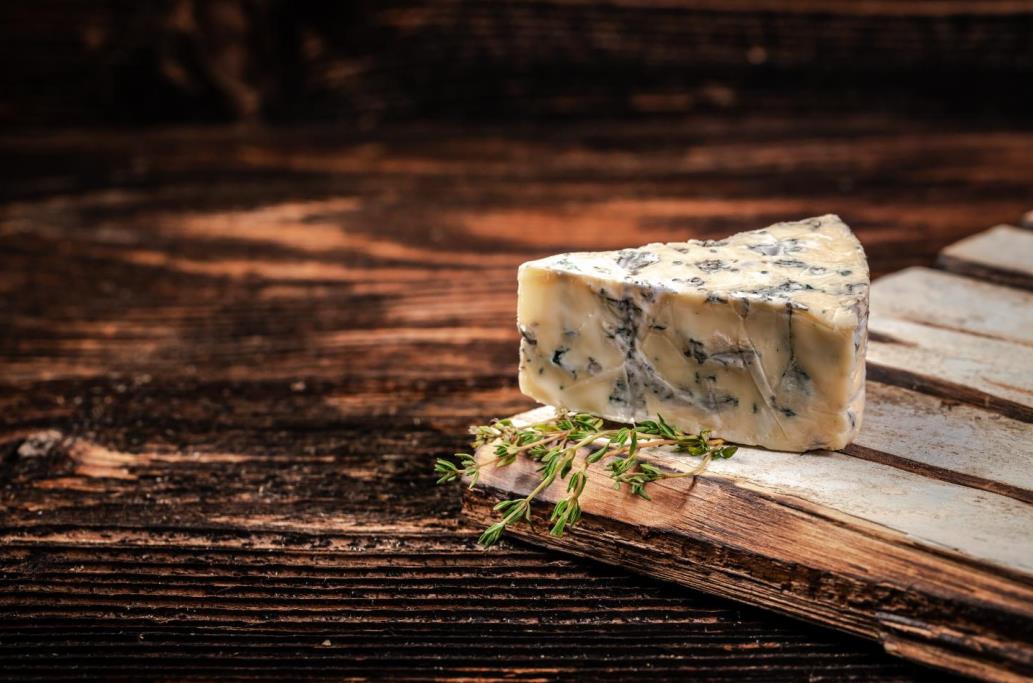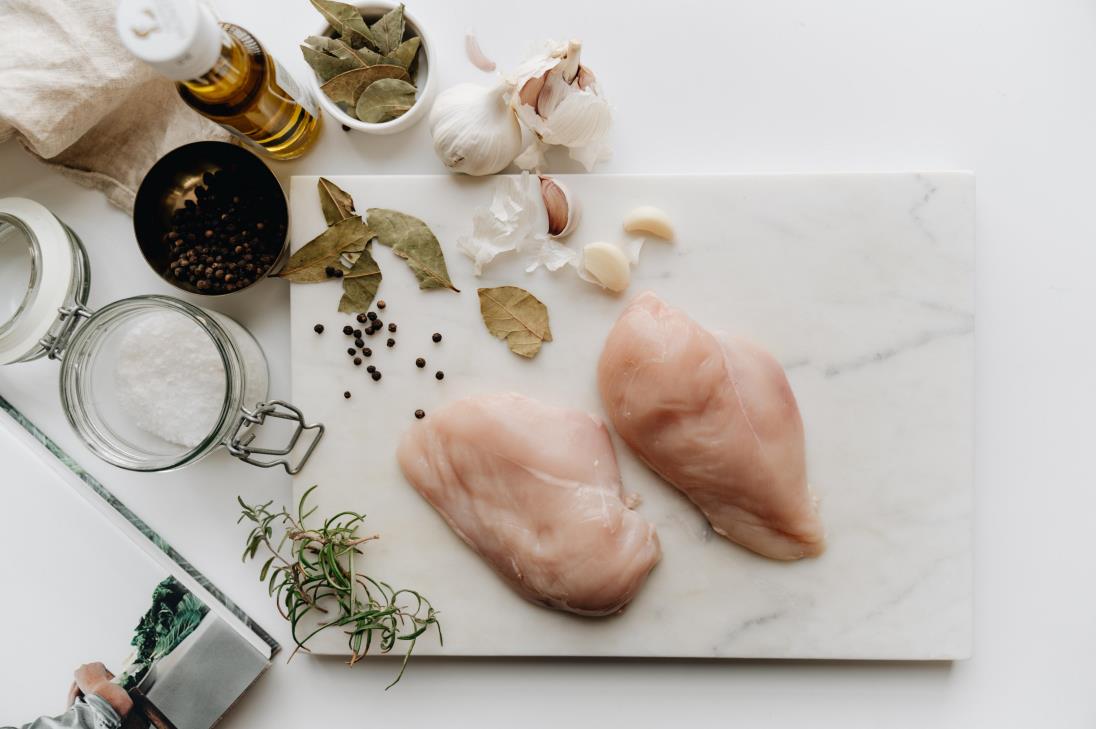Having a clean cutting board is critical to our health and safety when preparing ingredients. A not-so-clean cutting board can lead to bacterial growth, where it not only would make our dishes less tasty but also pose a health risk.
That’s why it’s essential to keep a cutting board clean and take some of the necessary actions when switching in between certain ingredients. With all the different types of cutting boards out there, from wooden to plastic to bamboo to you name it, it can get quite confusing to decide on the most hygienic option.
You don’t need to be a germaphobe to have concerns. This article will go over the sanitary attributes of the commonly used types of cutting boards to reveal the most sanitary cutting board and help you decide on which one to get.
Table of contents
Common types of cutting boards
Most people choose a cutting board based on how well it goes with their knives. If a cutting board tends to dull knives quicker, most people shy away from them.
The point of this article, however, is to solely focus on the cutting surface’s relationship with bacterial growth and sanitization. Feel free to read more on our blog, as we have many resources to help you find the perfect cutting board that won’t dull your knives quickly with hygiene in mind. Here are the most commonly seen cutting boards in the kitchen, whether home or professional.
Wooden
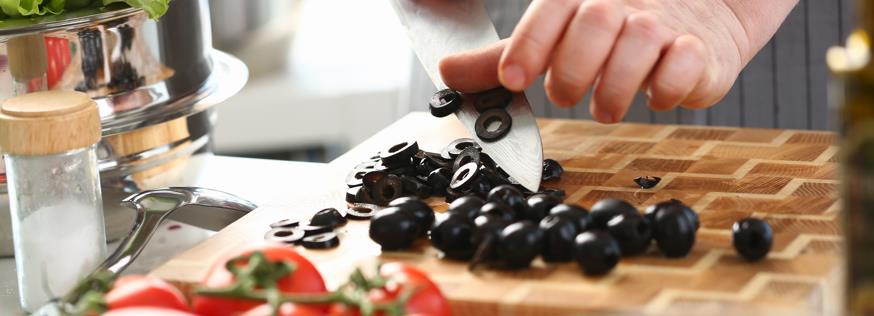
An overwhelming number of kitchens have wooden cutting boards. It can be end grain, edge grain, or face grain. While these have their main differences, which we’ve talked about in a previous article, there isn’t a noticeable difference from a sanitation perspective. Wood undoubtedly absorbs liquids, and therefore bacteria. However, studies showed that wood sponges bacteria, trapping and killing it ultimately.
Wood cutting board pros
- Gentle on the blade’s edges
- Aesthetic
- Natural sanitary features
Wood cutting board cons
- Harder to clean
- Heavier
- Requires more maintenance
Plastic
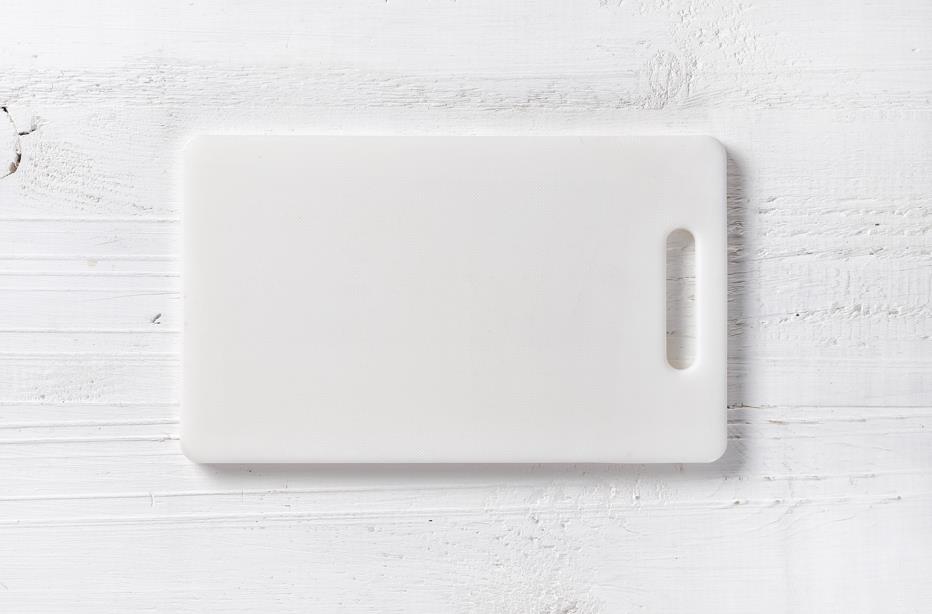
Though not as popular as wooden cutting boards, the chances are you have a plastic cutting board. Even if you only take it out to prepare ingredients when the primary one is busy, you can easily carry plastic cutting boards around thanks to their lightweight, making it easier to transfer ingredients. Plastic is non-porous. It doesn’t absorb liquids and is easier to clean. These are the main reasons why many favor them.
Plastic cutting board pros
- Lightweight
- Affordable
- Easy to clean
Plastic cutting board cons
- Isn’t the best for keeping a sharp edge
- Scratches and shows knife marks easily
Rubber
Rubber cutting boards have increased in popularity over the last decade. The non-porous surface gives no place to hide for bacteria while being able to resurface by sanding to get rid of the knife marks, which bacteria would otherwise have a place to grow. Although it isn’t as gentle as wood cutting boards, it isn’t as hard on the edges as plastic.
Rubber cutting board pros
- Can be resurfaced
- Most are dishwasher safe
- Gentler on the blade’s edges
Rubber cutting board cons
- Heavy
- Hard to slide around
Bamboo
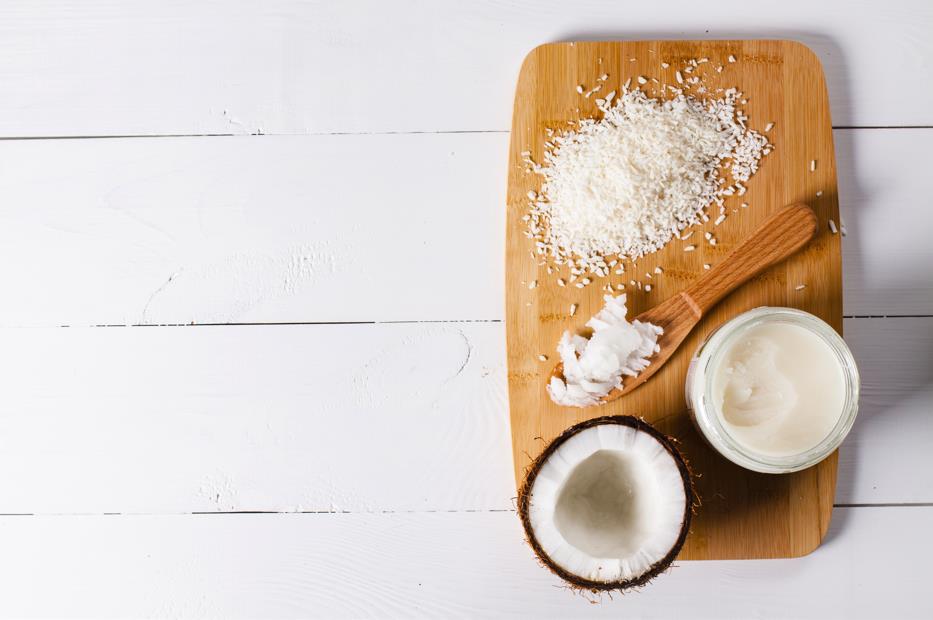
Bamboo is dense like walnut and maple wood but at a higher level, making it excellent at keeping juices and bacteria out. Despite being dense and having fibers two to three times stronger than timber, bamboo is lightweight.
A perfect choice for those looking for something robust, lightweight, and natural. These come with some downsides: being harder on knife edges and dulling them quicker.
Bamboo cutting board pros
- Resistant to warping and cracking
- Lightweight
- Affordable
Bamboo cutting board cons
- Hard on knife edges
- More adhesives than other cutting boards
Which one is more sanitary?
With all these different types of commonly used cutting boards, one has to be more sanitary, right? The answer to this question is more than one, depending on how you look at it.
If we take the ease of sanitization, plastic, rubber, and bamboo would be a better pick. However, the more you use these three kinds of cutting boards, the more scratches they will have, creating spots for bacteria to thrive.
The same also goes for wooden cutting boards, but they have the feature of closing these gaps naturally, which eventually leads to trapping bacteria and killing them.
You can think to yourself to resurface plastic, rubber, and bamboo cutting boards to close the spots where bacteria can grow. Nevertheless, the work you’d put in would be similar to conditioning a wooden cutting board, if not more challenging.
However, this doesn’t mean that the same can’t be done with a wooden cutting board. Like the others, you can resurface it and have a fresh surface to chop ingredients, but you wouldn’t need to do this as much as others.
For these reasons, wooden cutting boards have superiority over others for being the most sanitary option. Although wood cutting boards have self-cleaning properties, you can’t let them dirty waiting to be washed in the sink like any other. Be sure to utilize the proper washing techniques to keep it clean – more on that below.
What kind of cutting board should you get?
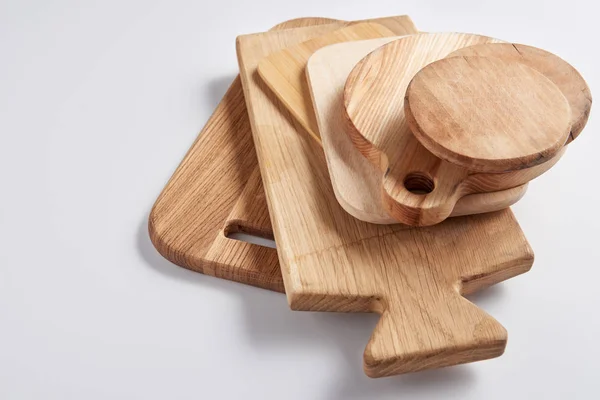
Like everything kitchen-related, we all have different opinions on what makes an item best. With everything explained above, you might have already decided on the type of cutting board to get. Here are two main things about hygiene that will help you decide on the right cutting board.
Ease of cleaning
A major consideration when purchasing a cutting board is the ease of cleaning. Some cutting boards are easier to clean; some are more challenging. Generally, wooden cutting boards, whether end grain, edge grain, or face grain are harder to clean. They are also not dishwasher safe. The harsh conditions created by excess heat and chemicals can give you a warped or cracked cutting board pretty quickly.
If hand-washing a cutting board is a problem for you for reasons such as having a small sink and you need to clean them in the dishwasher, it makes sense to look away. Consider how you prefer cleaning your cutting board and decide accordingly to keep it sanitized and long-lasting.
Maintenance
Our kitchen knives aren’t the only things that require care. After prolonged use, you’ll need to care for your cutting boards to make them more durable. This includes conditioning wooden cutting boards with mineral oil, resurfacing a rubber cutting board, cleaning a plastic cutting board with hydrogen peroxide, and seasoning a bamboo cutting board.
You’ll always have some maintenance to do no matter what cutting board you pick. Some cutting boards will be easier to upkeep, but require you to invest a similar amount of time and effort. For example, wood cutting boards are more difficult to clean than plastic but maintaining them is easier. These are important to consider if maintenance is a determining factor for you.
Using multiple cutting boards
Having more than one cutting board will help you take advantage of the best attributes of different types of surfaces. Utilizing more than one cutting board whether it’s the same kind or not is also a great way to avoid cross-contamination, transferring bacteria from one place to another.
It is recommended that you use one cutting board only for cutting raw meat, poultry, and seafood, and the other for vegetables, fruits, and other foods you can eat right away. You don’t necessarily need to do this if you can wash the cutting board in between, but the extra work will be time-consuming and won’t be as convenient compared to having a dedicated surface to cut different ingredients.
How to clean a cutting board?
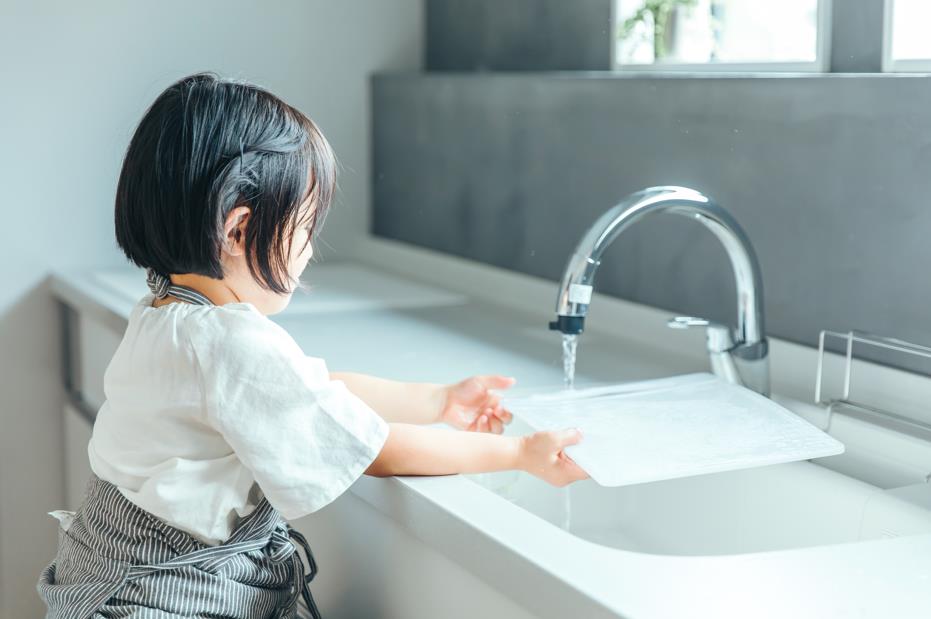
Cleaning a cutting board is not a big deal. If your cutting board isn’t exceptionally dirty, you can give it a thorough wash with hot water and soap. Scrub any traces of foods and juices using an abrasive sponge and rinse. Here are step-by-step instructions on cleaning your cutting board.
- Use a drop of dishwasher soap with a tiny bit of water and scrub the surface of the cutting board. You can use a sponge for this or a scrub brush if it’s quite dirty. Make sure to brush it evenly with special care to the knife marks.
- Rinse the soap using hot water and wipe dry the board with a clean kitchen cloth.
- Make sure not to lay it flat as the gravity will pull excess moisture into the board. Instead, stand the cutting board on its side and let it dry completely before use.
Keeping a cutting board clean is as simple as that, but there are additional things you can do if you want to take cleaning a step further.
To truly remove all the germs on your cutting board, wipe it with white vinegar or bleach water. This will remove germs that pose a health risk like salmonella, listeria, and e. coli. Additionally, use lemon as a deodorizer to get rid of unwanted smells on your cutting board.
How to safely use a cutting board?
Cutting boards are sturdy tools that resist most of the things you throw at them. Regardless of the building material of your cutting board, it will be extremely challenging to damage it.
While your cutting board will be safe in most situations, using it wrongly can lead to accidents where you end up cutting yourself. Like using your kitchen knives properly, your cutting board needs to be in the correct position and on a stable surface.
Some cutting boards only have one surface where you can cut ingredients, and the other might come with a nonslip piece that helps keep it in place when cutting. Ensuring that this side faces down on a stable, flat surface like your countertop is vital. Additionally, keeping the entire blade on the cutting board while cutting will prevent hurting yourself in case of mishaps.
Conclusion
Wooden cutting boards have natural antibacterial properties, whereas the others mentioned don’t. This makes them the preferred choice for being the most hygienic cutting board. Moreover, they are gentler on the edges of kitchen knives, especially end grain wood cutting boards.
The wood cutting board’s self-cleaning traits are beneficial for sure, but with enough care and cleaning after use, others will be just as sanitary.
Overall, our pick for the most sanitary cutting board is wood. You can maintain any other cutting board just as hygienic if kept clean and cared for continually. It’s just less work with wooden cutting boards.
Maintaining and looking after your cutting board will also help keep a sharp edge for longer. If your knives keeping a sharp edge for long is important for you, go to our homepage to shop for handmade kitchen knives with superb edge-retention.





